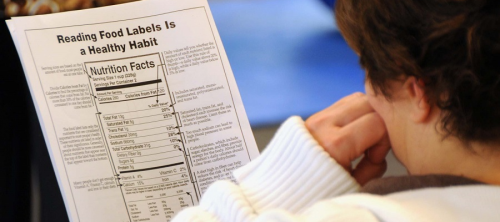
If you have a clear understanding of the nutritional value of packaged food that you are considering, you can make healthier choices. Here are a few tips to help navigate Nutrition Facts labels.
Start by checking out the Serving Size. The label will identify how many servings are in the container but it is imperative that you are aware of what the serving size is. Some manufacturers take what we might think of as a single serve container and call it two servings to make the numbers on the label look more appealing to consumers. (public service announcement: that little package of ramen is 2 servings!)
Next, look at the Calories per Serving. Despite the proliferation of fad diets that may emphasize limiting carbohydrates or fat, weight control ultimately depends on the calories you consume. The FDA recently required that manufacturers put the calorie count in larger and bolder type so it is easier for consumers to find.
The rest of the label contains the list of nutrients (as specified by the FDA) and their % Daily Value. The percentages show how much of the daily recommended amount is in a single serving, based on a standard daily diet of 2,000 calories. Obviously, those figures will differ if you consume more or less than 2,000 calories per day.
Some nutrients are certainly better for our health than others. To improve our diet, we should try to consume foods that are high in fiber, protein, vitamin D, calcium, iron and potassium. For better health, we should avoid consuming too much saturated fat, cholesterol, sodium and sugar. Avoiding trans-fat completely is always a wise choice.
Be an educated consumer. Make it a habit to read the Nutrition Facts label on the foods you are considering buying. With better understanding, you can choose healthier, nutrient-dense food for lifelong nutritious eating habits.
